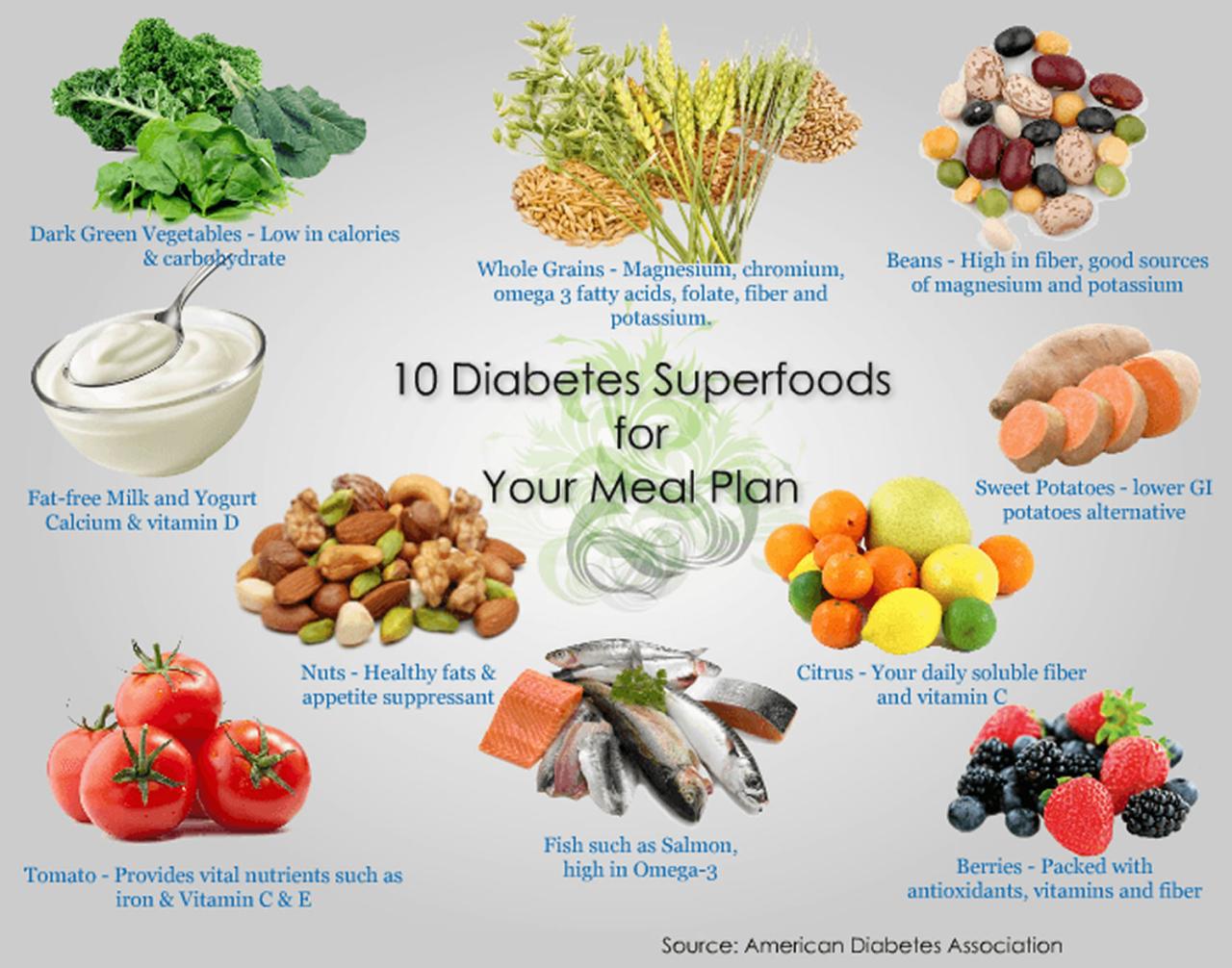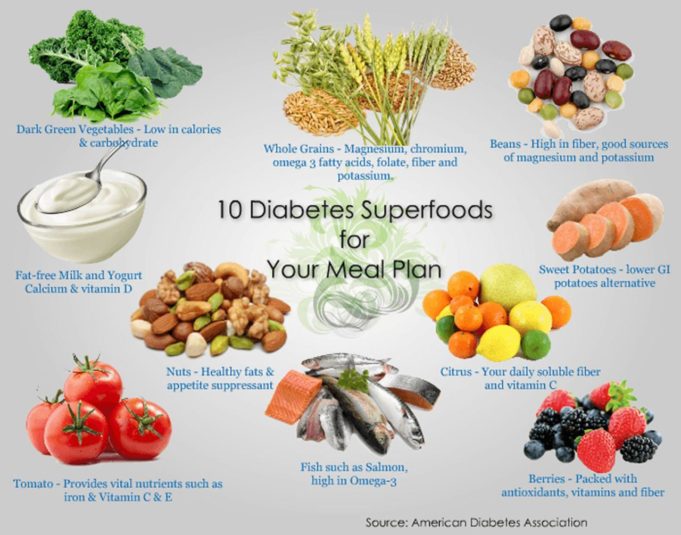What diet for diabetes? That’s a question that echoes in the minds of millions living with this chronic condition. Diabetes isn’t just about sweet cravings, it’s about a delicate dance with blood sugar levels. And guess what?
Food is your partner in this dance! It’s time to ditch the boring, restrictive diets and embrace a world of delicious, diabetes-friendly choices that can help you live a healthier, happier life.
This guide will be your roadmap through the world of diabetes management, taking you from understanding the basics of diabetes to exploring the best diet strategies for keeping your blood sugar in check. We’ll debunk myths, offer practical tips, and even sprinkle in a dash of humor to make the journey a little more enjoyable.
Understanding Diabetes
Diabetes is a chronic condition that affects how your body regulates blood sugar. It’s like your body’s got a sugar-regulating system, and in diabetes, that system’s gone a bit haywire. This can lead to a whole bunch of problems if not managed properly.
Types of Diabetes
There are three main types of diabetes: Type 1, Type 2, and Gestational diabetes.
- Type 1 Diabetes:This is an autoimmune disease where your body attacks and destroys the cells in your pancreas that make insulin. It’s like your body’s own immune system is on a sugar-bashing rampage. Think of it like a rogue army attacking your pancreas.Type 1 diabetes usually develops in childhood or adolescence, but it can happen at any age. You can’t prevent it, and it requires lifelong insulin therapy.
- Type 2 Diabetes:This is the most common type of diabetes. It happens when your body either doesn’t make enough insulin or can’t use the insulin it makes properly. It’s like your body’s got a sugar-regulating system, but it’s not working as efficiently as it should.Type 2 diabetes usually develops in adulthood, but it’s becoming increasingly common in children and teenagers. You can often prevent or delay Type 2 diabetes with lifestyle changes like weight loss, exercise, and a healthy diet.
- Gestational Diabetes:This type of diabetes develops during pregnancy. It’s like your body’s sugar-regulating system is a bit overwhelmed by the demands of pregnancy. It usually disappears after delivery, but it increases your risk of developing Type 2 diabetes later in life.
Impact of Diabetes on the Body
When your blood sugar is consistently high, it can damage your blood vessels and nerves, leading to a whole host of problems. Think of it like a sugary syrup slowly clogging up your body’s pipes.
- Heart Disease:High blood sugar can damage your blood vessels, making them more likely to clog and lead to heart attacks or strokes.
- Nerve Damage:High blood sugar can damage your nerves, causing pain, numbness, and tingling in your hands, feet, and other parts of your body.
- Kidney Damage:High blood sugar can damage your kidneys, leading to kidney failure.
- Eye Damage:High blood sugar can damage your eyes, leading to vision loss and even blindness.
- Foot Damage:High blood sugar can damage your feet, making you more susceptible to infections and even amputations.
Long-Term Health Risks Associated with Diabetes
If you have diabetes, you’re at increased risk of developing a number of serious health problems, including:
- Heart Disease:This is the leading cause of death among people with diabetes.
- Stroke:This happens when a blood clot blocks an artery in the brain.
- Kidney Failure:This can lead to the need for dialysis or a kidney transplant.
- Amputations:This is more common in people with diabetes because of nerve damage and poor circulation in the feet.
- Vision Loss:This can happen if diabetes damages the blood vessels in the retina.
The Role of Diet in Diabetes Management
Diabetes is a chronic condition that affects how your body regulates blood sugar. While there’s no cure, managing diabetes effectively involves a combination of healthy lifestyle choices, including diet. Diet plays a crucial role in controlling blood sugar levels, preventing complications, and improving overall health for individuals with diabetes.
The Impact of Diet on Blood Sugar Levels
Diet directly influences blood sugar levels. When you eat carbohydrates, your body breaks them down into glucose, which enters your bloodstream. Insulin, a hormone produced by the pancreas, helps move glucose from your bloodstream into your cells for energy. In individuals with diabetes, either the pancreas doesn’t produce enough insulin (type 1 diabetes) or the body doesn’t respond properly to insulin (type 2 diabetes).
This leads to elevated blood sugar levels.By carefully selecting the types and amounts of carbohydrates you consume, you can help manage blood sugar fluctuations.
Key Nutrients to Focus On
A well-balanced diet for individuals with diabetes should emphasize certain key nutrients:
- Fiber: Fiber slows down the absorption of sugar into the bloodstream, helping to prevent blood sugar spikes. Good sources of fiber include fruits, vegetables, whole grains, and legumes.
- Lean Protein: Protein helps you feel full and satisfied, preventing overeating. It also helps stabilize blood sugar levels by slowing down the absorption of carbohydrates. Choose lean protein sources like fish, poultry, beans, lentils, and tofu.
- Healthy Fats: Unsaturated fats, found in olive oil, avocados, nuts, and seeds, can improve heart health and help control blood sugar levels. Limit saturated and trans fats found in processed foods and red meat.
Key Nutrients to Limit, What diet for diabetes
While some nutrients are beneficial, others can contribute to blood sugar fluctuations and should be limited:
- Added Sugars: Sugary drinks, processed foods, and desserts are high in added sugars, which can rapidly raise blood sugar levels. Limit your intake of these foods and opt for natural sources of sweetness like fruits.
- Saturated and Trans Fats: These unhealthy fats can increase your risk of heart disease and contribute to weight gain, which can make diabetes management more challenging. Choose lean meats and poultry, and opt for unsaturated fats like olive oil and avocados.
- Refined Grains: Refined grains like white bread and white rice are quickly digested and can cause rapid blood sugar spikes. Choose whole grains like brown rice, quinoa, and whole-wheat bread instead.
Sample Meal Plan for Individuals with Diabetes
Here’s a sample meal plan that incorporates the principles of a diabetes-friendly diet:
- Breakfast: Oatmeal with berries and nuts, a whole-wheat English muffin with scrambled eggs and avocado, or a Greek yogurt parfait with granola and fruit.
- Lunch: Salad with grilled chicken or fish, a lentil soup with whole-wheat bread, or a tuna sandwich on whole-wheat bread with lettuce and tomato.
- Dinner: Salmon with roasted vegetables, chicken stir-fry with brown rice, or lentil pasta with tomato sauce and vegetables.
- Snacks: Fruits like apples, bananas, or oranges, a handful of nuts, or a small amount of dark chocolate.
Popular Diabetes-Friendly Diets
There are many different diets that can be helpful for people with diabetes. These diets aim to manage blood sugar levels, improve overall health, and reduce the risk of complications. Let’s dive into some of the most popular and effective ones.
Comparison of Popular Diabetes-Friendly Diets
This section will explore three popular diabetes-friendly diets: the Mediterranean diet, the DASH diet, and the low-carb diet. We’ll compare and contrast their key features and provide examples of recipes from each.
| Diet | Key Features | Recipes |
|---|---|---|
| Mediterranean Diet |
|
|
| DASH Diet |
|
|
| Low-Carb Diet |
|
|
Food Choices for Diabetes

Your diet plays a crucial role in managing diabetes, and making smart food choices is key to keeping your blood sugar levels in check. It’s not about deprivation, but about understanding the impact of different foods and making informed decisions.
Foods to Focus On
Choosing nutrient-rich foods can help you feel full, satisfied, and manage your blood sugar levels effectively. These foods are your allies in the fight against diabetes.
- Whole Grains:Opt for whole grains like brown rice, quinoa, whole-wheat bread, and oats. These grains are packed with fiber, which helps slow down the absorption of sugar into your bloodstream, preventing blood sugar spikes.
- Fruits:Fruits are a natural source of vitamins, minerals, and fiber. Choose fruits like berries, apples, pears, and oranges. Remember, moderation is key, as some fruits are higher in natural sugars.
- Vegetables:Vegetables are low in calories and high in fiber, making them an excellent addition to any diabetic diet. Fill your plate with leafy greens, broccoli, carrots, and other colorful vegetables.
- Lean Protein:Lean protein sources like fish, chicken, beans, lentils, and tofu can help you feel full and satisfied, keeping you from overeating. Protein also helps stabilize blood sugar levels.
Foods to Limit or Avoid
While some foods are your allies, others can work against your diabetes management goals. Knowing which foods to limit or avoid can make a big difference in your blood sugar control.
So, you’re wondering about the best diet for diabetes? It’s all about making smart choices, and it’s not as restrictive as you might think. It’s all about finding the right balance of foods, and you know what? The word “diet” actually means more than just what you eat – it’s about your overall lifestyle! Check out this article to learn more about the diet meaning and how it applies to your diabetes management.
Once you understand the bigger picture, you can start making those delicious and healthy choices that will keep your blood sugar in check.
- Sugary Drinks:Soda, juice, and sweetened beverages are packed with sugar and contribute to blood sugar spikes. Stick to water, unsweetened tea, or sparkling water for your hydration needs.
- Processed Foods:Processed foods are often high in sugar, unhealthy fats, and sodium, making them a poor choice for people with diabetes. Choose whole, unprocessed foods whenever possible.
- Saturated Fats:Saturated fats, found in red meat, butter, and fried foods, can raise cholesterol levels and contribute to heart disease. Opt for lean protein sources and healthy fats like olive oil and avocados.
Healthy Snack Ideas
Snacking can be a healthy way to manage blood sugar levels and prevent hunger pangs. Here are some diabetes-friendly snack ideas:
- A handful of almonds or walnuts:These nuts are a good source of healthy fats, protein, and fiber.
- A small apple with a tablespoon of peanut butter:This snack combines protein, fiber, and healthy fats for a satisfying and blood sugar-friendly treat.
- A cup of nonfat Greek yogurt with berries:Yogurt provides protein and calcium, while berries add sweetness and fiber.
- A hard-boiled egg:Eggs are a great source of protein and can help keep you feeling full.
Practical Tips for Eating with Diabetes
Living with diabetes doesn’t mean you have to say goodbye to delicious food forever! It’s all about making smart choices and mastering a few handy tricks to keep your blood sugar in check. Let’s dive into some practical tips that will make managing your diabetes a breeze.
So, you’re wondering about the best diet for diabetes? Well, it’s not about fad diets or crazy restrictions, but rather about finding a sustainable way of eating that keeps your blood sugar levels in check. This means focusing on a what is balanced diet , which is basically like a well-balanced orchestra – all the different food groups playing together in harmony.
And with a balanced diet, you can say goodbye to the sugar blues and hello to a healthier you!
Managing Portion Sizes
Portion control is key to maintaining a healthy blood sugar level. A visual guide, like using your hand as a measuring tool, can help you get a handle on appropriate portion sizes.
For example, your palm represents a serving of protein, your fist is about a cup of vegetables, and your cupped hand is a serving of carbohydrates.
Meal Timing
The timing of your meals is just as important as what you eat. Aim for regular meals and snacks throughout the day to keep your blood sugar levels stable.
For example, a typical schedule might involve breakfast, a mid-morning snack, lunch, an afternoon snack, and dinner.
Reading Food Labels
Food labels are your best friend when it comes to making informed choices. Pay close attention to the serving size, total calories, and grams of carbohydrates, protein, and fat.
Navigating the world of diabetes diets can be a real sugar rush! It’s all about finding the right balance of carbs, proteins, and healthy fats. Of course, if you’re struggling to find the perfect plan, you might want to consider consulting a dietitian – check out how much do dietitians make to see if it’s worth the investment.
But hey, with a little research and dedication, you can conquer those blood sugar levels and enjoy a delicious, diabetes-friendly life!
A helpful tip is to look for foods that are low in saturated fat, trans fat, and added sugars.
Dining Out with Diabetes
Eating out doesn’t have to be a blood sugar nightmare! Here are some tips to make dining out a little easier:
- Check the menu online before you go to make informed choices.
- Ask for your food to be prepared without added butter, oil, or sauces.
- Request a side of vegetables instead of fries or mashed potatoes.
- Split a meal with a friend or take half of your meal home.
Importance of Physical Activity: What Diet For Diabetes
Regular exercise is not just about staying fit; it’s a powerful tool in managing diabetes. It helps your body use insulin more effectively, improving blood sugar control and reducing your risk of complications.
Benefits of Physical Activity for Diabetes Management
Regular physical activity plays a vital role in diabetes management, offering a wide range of benefits:
- Improved Blood Sugar Control:Exercise helps your body use glucose for energy, lowering blood sugar levels. This is especially important for people with type 2 diabetes, as their bodies don’t use insulin effectively.
- Increased Insulin Sensitivity:Exercise makes your cells more responsive to insulin, allowing them to take up glucose more readily, which helps regulate blood sugar levels.
- Weight Management:Losing even a small amount of weight can significantly improve blood sugar control and reduce the risk of diabetes complications. Exercise helps you burn calories and lose weight.
- Reduced Risk of Heart Disease:Diabetes increases the risk of heart disease, but exercise can help lower blood pressure, improve cholesterol levels, and strengthen your heart.
- Improved Mood and Sleep:Exercise releases endorphins, which have mood-boosting effects and can help you sleep better.
Types of Physical Activity for People with Diabetes
There are many different types of physical activity that are beneficial for people with diabetes.
- Aerobic Exercise:This type of exercise raises your heart rate and helps you burn calories. Examples include brisk walking, running, swimming, cycling, and dancing. Aim for at least 30 minutes of moderate-intensity aerobic exercise most days of the week.
- Strength Training:Strength training helps build muscle mass, which can improve insulin sensitivity. Examples include lifting weights, using resistance bands, or doing bodyweight exercises like push-ups and squats. Aim for at least two strength-training sessions per week.
- Flexibility Exercises:Stretching and yoga can help improve flexibility, balance, and range of motion. Aim for at least 10 minutes of stretching each day.
Consulting with a Healthcare Professional
Before starting any new exercise program, it’s essential to consult with your healthcare professional. They can help you determine the best type and intensity of exercise for your individual needs and health conditions. They can also monitor your blood sugar levels and make adjustments to your exercise program as needed.
Supplements and Alternative Therapies
You’ve learned about the importance of diet and exercise in managing diabetes, but what about supplements and alternative therapies? While these may seem like a quick fix, it’s crucial to understand their potential benefits and risks before incorporating them into your diabetes management plan.
Chromium and Cinnamon
Chromium and cinnamon are two popular supplements often touted for their potential benefits in managing blood sugar levels.
- Chromiumis a mineral that plays a role in insulin sensitivity. Some studies suggest that chromium supplementation may improve blood sugar control in people with type 2 diabetes. However, more research is needed to confirm these findings and determine the optimal dosage.
- Cinnamon, a spice derived from the cinnamon tree, has been shown to lower blood sugar levels in some studies. It’s thought to work by improving insulin sensitivity and reducing glucose absorption from the gut. However, the evidence for cinnamon’s effectiveness in managing diabetes is mixed, and further research is required.
It’s important to note that supplements should not replace a healthy diet and exercise program. Always consult with your healthcare professional before taking any supplements, as they may interact with other medications or have side effects.
Acupuncture and Yoga
Acupuncture and yoga are two alternative therapies that have gained popularity for their potential benefits in managing diabetes.
- Acupuncture, a traditional Chinese medicine practice, involves inserting thin needles into specific points on the body. Some studies suggest that acupuncture may improve blood sugar control, reduce insulin resistance, and alleviate symptoms of diabetic neuropathy.
- Yoga, a mind-body practice that involves physical postures, breathing techniques, and meditation, has been shown to improve blood sugar control, reduce stress, and enhance overall well-being. Yoga may also help with weight management, which is crucial for managing diabetes.
While these therapies may offer some benefits, it’s essential to remember that they are not a cure for diabetes. Always consult with your healthcare professional before starting any new alternative therapies, especially if you have other health conditions or are taking medications.
The Importance of Consulting a Healthcare Professional
Managing diabetes effectively requires a collaborative approach between you and your healthcare team. Regular check-ups and close monitoring are crucial for keeping your blood sugar levels within a healthy range and preventing complications.
The Role of a Registered Dietitian
A registered dietitian (RD) is a qualified professional who can provide personalized guidance on nutrition for diabetes management. They can help you develop an individualized meal plan that meets your specific needs and preferences while considering your overall health and lifestyle.
Benefits of Working with a Healthcare Team
- Tailored Treatment Plan:Your healthcare team can create a personalized treatment plan that considers your individual needs, medical history, and lifestyle factors.
- Effective Blood Sugar Management:Regular check-ups and blood sugar monitoring help ensure your blood sugar levels stay within a safe range, minimizing the risk of complications.
- Early Detection and Prevention of Complications:Regular check-ups can help detect potential complications early, allowing for timely intervention and prevention.
- Improved Quality of Life:Effective diabetes management can improve your overall health and well-being, leading to a better quality of life.
Final Summary
Remember, managing diabetes is a marathon, not a sprint. There will be ups and downs, but with the right knowledge, support, and a dash of culinary creativity, you can conquer this challenge and enjoy a fulfilling life. So, grab your fork, put on your dancing shoes, and let’s get started!
Q&A
Can I still eat sweets if I have diabetes?
While it’s important to limit sugary treats, you don’t have to completely eliminate them. The key is moderation and choosing healthier options like dark chocolate or fruit in moderation.
What are the best fruits for people with diabetes?
Fruits are a great source of fiber and nutrients, but some fruits have a higher glycemic index than others. Berries, apples, and pears are generally good choices.
Can I exercise if I have diabetes?
Absolutely! Exercise is essential for managing diabetes. It helps your body use insulin more effectively and can lower your blood sugar levels. Always consult your doctor before starting a new exercise program.
What about supplements? Are they helpful?
Some supplements like chromium and cinnamon may have potential benefits for diabetes management, but they should not be used as a substitute for a healthy diet and lifestyle. It’s always best to talk to your doctor before taking any supplements.
























